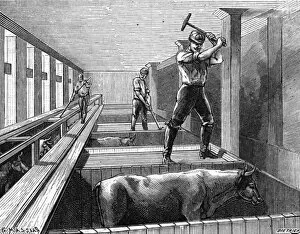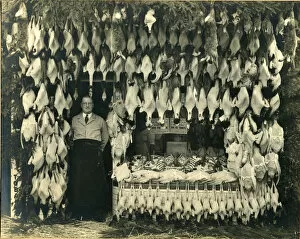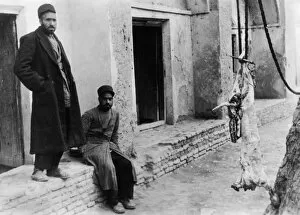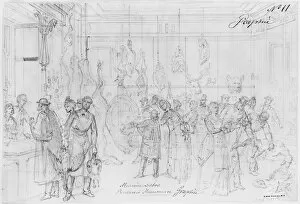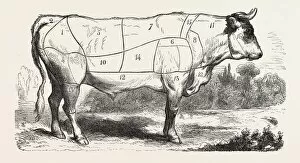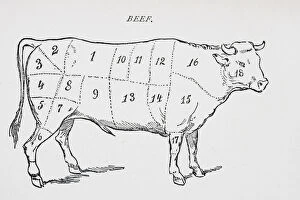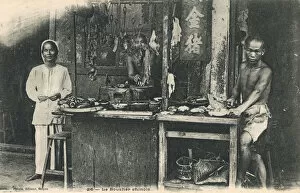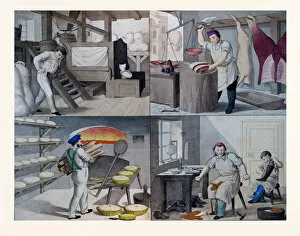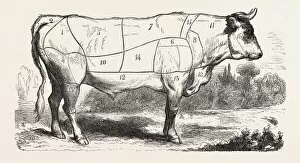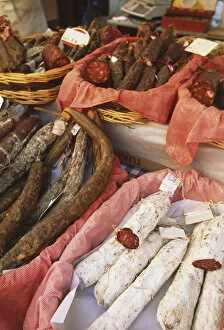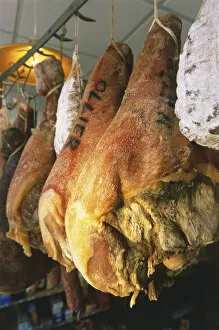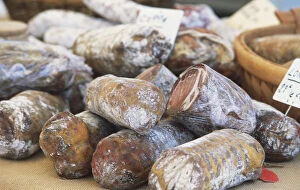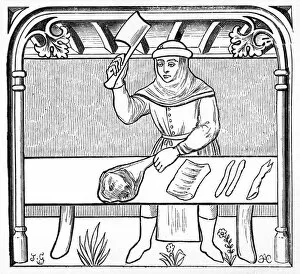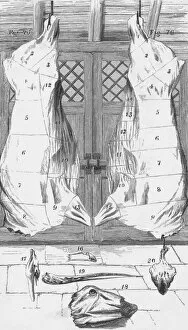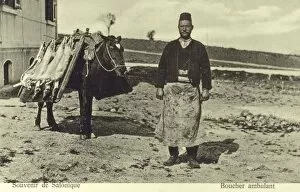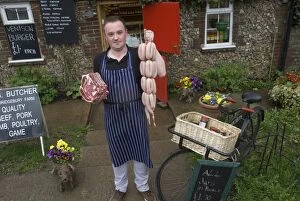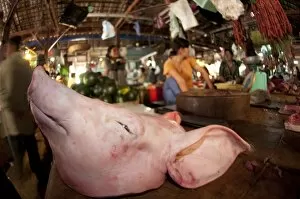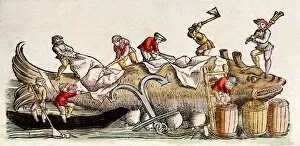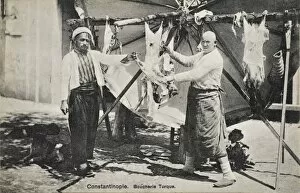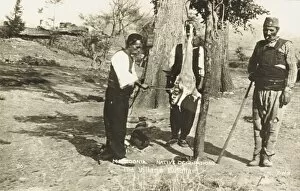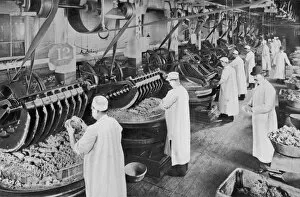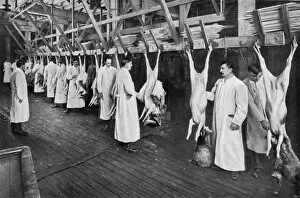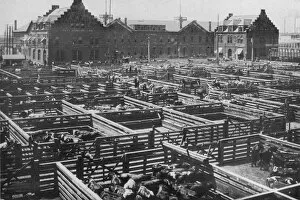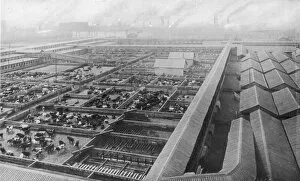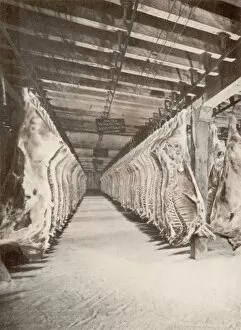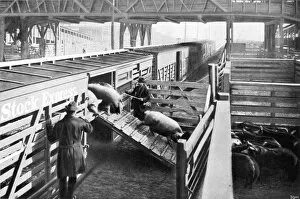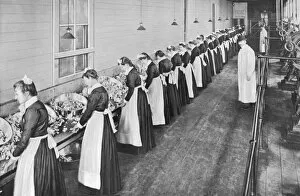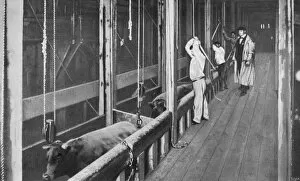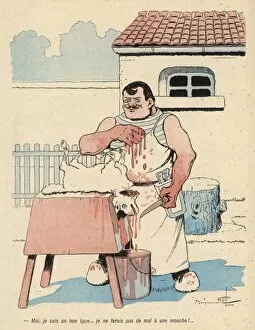Butchery Collection (page 3)
Step into the world of butchery, where cuts of beef are transformed into culinary masterpieces
For sale as Licensed Images
Choose your image, Select your licence and Download the media
Step into the world of butchery, where cuts of beef are transformed into culinary masterpieces. In this captivating journey, we delve into the rich history and timeless artistry of a woman butcher in the 1920s. Through black and white photographs, we witness her skillfully wielding various butchery tools, showcasing her expertise in carving Beef, Veal, Pork, and Mutton Cuts. Transporting us further back in time is an enchanting engraving from 1802 that depicts the intricate process of transforming livestock into delectable cuts. From Pig to Pork - a fascinating glimpse into how every part is utilized with precision and care. As we venture deeper into this realm, our senses are overwhelmed by the sights and sounds emanating from Chicago Stockyards. The bustling atmosphere captures the essence of this thriving industry as Beef Carcases line up one after another. These images serve as a testament to both human ingenuity and nature's bounty. Butchers have been revered throughout history for their indispensable role in providing sustenance to communities. A mesmerizing 14th-century illustration from Tacuinum Sanitatis showcases their craftmanship while Roast ducks tempt passersby at Bowrington Road Market in Wan Chai on Hong Kong Island. Intriguingly diverse yet united by their dedication to their trade, these snapshots remind us that butchery is not merely about cutting meat; it embodies tradition, skillful technique passed down through generations. It represents an art form that marries science with creativity – transforming raw ingredients into mouthwatering delicacies fit for any table. So next time you savor a succulent steak or tender cutlet on your plate, take a moment to appreciate the centuries-old legacy behind it – a tribute to those who have perfected the craft throughout time immemorial.

